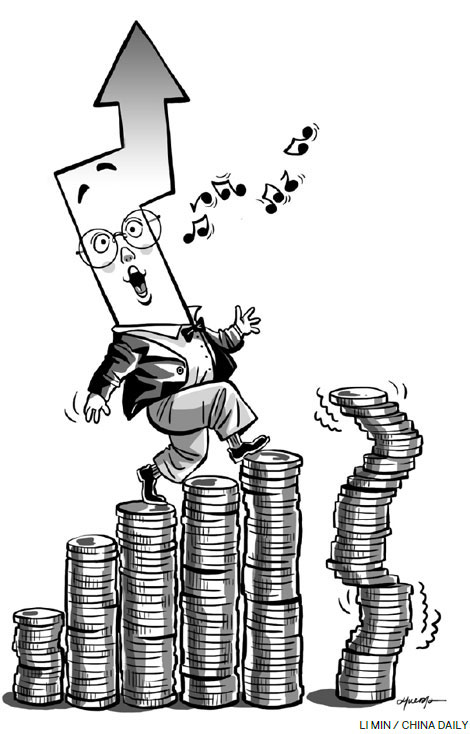Are today's equities overvalued?
By Michael Spence (China Daily) Updated: 2015-04-01 07:35

That said, some trends could be having the opposite effect on expectations for earnings growth. More than two-fifths of the S&P 500's earnings come from external markets, some of which, like Europe and Japan, are barely growing, while others, like China, are slowing.
The appreciation of the dollar exacerbates the situation for US markets, because it creates headwinds for exporters and causes companies' foreign earnings, reported in dollars, to decline. And a slowdown in productivity growth, together with excessive leverage and persistent public-sector under-investment, may be undermining medium-term potential economic growth.
While expectations of faster earnings growth may well be contributing to elevated P/E levels, the current situation is complicated, to say the least. What is certain is that expectations of high earnings growth would have a more durable positive effect on P/E levels than the suppression of the equity risk premium.
The other important factor affecting P/E is the risk-free rate. As monetary policy normalizes - a process that has already begun in the United States - the risk-free rate is expected to rise to a level that is consistent with stable 2 percent inflation, which, in turn, corresponds with a level of unemployment. What precisely that rate is, however, remains uncertain, and extremely difficult to determine given that it is affected by virtually every aspect of the unfolding growth patterns.
In such a complex environment, therefore, investors can be expected to reach widely disparate conclusions, which will sustain - if not increase - market volatility.
The author, a Nobel laureate in economics, is professor of economics at New York University's Stern School of Business and senior fellow at the Hoover Institution. His latest book is The Next Convergence - The Future of Economic Growth in a Multispeed World.
Project Syndicate

I’ve lived in China for quite a considerable time including my graduate school years, travelled and worked in a few cities and still choose my destination taking into consideration the density of smog or PM2.5 particulate matter in the region.











